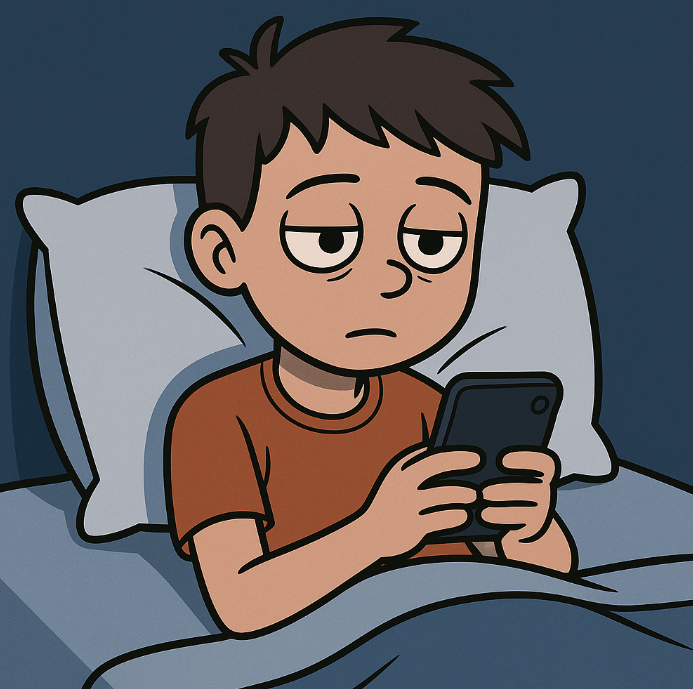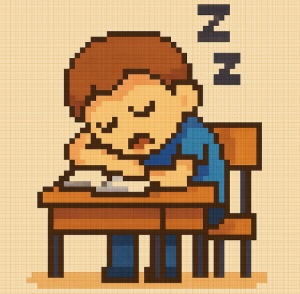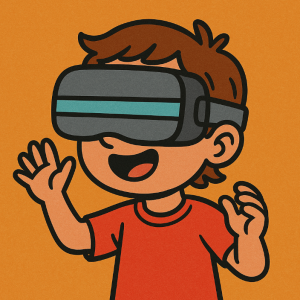
When Big Feelings Meet Big Screens
“Wait, what?!”
Across 39 research studies, the same pattern kept popping up: when adolescents struggle to manage big feelings, their screen use gets harder to manage too. And when screen time turns compulsive—scrolling late into the night, gaming through homework, chasing likes—emotions get even tougher to handle. It’s a loop. The good news? Loops can be rewired.
What the science actually says (in real words)
Researchers pulled together dozens of studies on teens and young adults (roughly ages 10–24) and asked a simple question: Are big, hard-to-manage emotions linked to problematic technology use (PTU)?
Short answer: Yes. Teens who had more trouble with emotion regulation—staying on task when upset, naming feelings, pausing before acting—were more likely to struggle with overuse of phones, social media, gaming, and the internet in general.
A few extra takeaways you’ll care about:
- The link showed up across countries, school types, and measures.
- Anxiety and depression often sat in the mix, making emotions and tech habits even stickier.
- General “emotion skills” classes helped some—but direct limits and routines around tech were often more effective for reducing compulsive use.
Why feelings + screens is such a powerful combo
Think of a phone as a pocket-sized mood manager. Bad day? Open TikTok. Lonely? Hop on Discord. Stressed? One more level. These tools work (briefly). That’s the trap. Relief now, problems later: less sleep, slipping grades, more conflicts, and fewer chances to practice real coping.
Under the hood, teen brains are still wiring up the systems that help with planning, prioritizing, and braking impulses. When emotions spike, those brakes can squeal. Add apps designed for endless engagement and you’ve got the perfect storm: high emotion + high reward = hard to stop.
School is where the loop shows up first
If you’re a teacher, counselor, or principal, you see it:
- The student who “just checks one thing” and vanishes into a scroll.
- The lunchroom gamer who can’t re-enter class without a meltdown.
- The honor-roll kid who’s suddenly exhausted, irritable, and turning in work at 1 a.m.
These aren’t “bad kids” or “weak parents.” They’re predictable human responses to stress, design, and development. And that means we can design better supports.
From research to real life: what works now
Let’s turn findings into moves you can make today—at home and at school.
1) Pair limits with skills (not one or the other).
- At school: Set device-light periods (first 15 minutes of class; last 10 minutes of the day) and teach a 60-second “reset” routine: Name it → Breathe it → Plan it (e.g., “Frustrated; 4 breaths; I’ll start #1”).
- At home: Create two “protected zones”: the hour before bed and the first 30 minutes after wake-up. Fill both with a low-friction alternative (shower, breakfast, music, stretch, pet time).
2) Make feelings visible and workable.
- Teach the words. Post a simple emotion wheel or “mood menu” in classrooms and kitchens.
- Use “If-Then” plans. “If I feel overwhelmed during homework, then I text Mom ‘pause’ and take a 3-minute walk.”
- Cue the pause. A sticky note on the Chromebook: “Pause → 3 breaths → choose.”
3) Target the hotspots.
Research points to impulsivity and “escape” as common drivers. Go straight at them.
- Impulse aid: Try 10-second delays before opening an app. Count backward out loud.
- Escape swap: Offer a short, off-screen micro-escape (cold water on wrists, wall push-ups, doodle) before any “doom scroll.”
4) Fix sleep first.
Sleep loss fuels bigger emotions and more scrolling.
- One rule to rule them all: Phones charge outside bedrooms.
- At school: Normalize sleep talk. A two-question check-in (“Hours?” “Quality?”) can flag students who need a plan.
5) Coach co-regulation, not control.
Kids borrow our calm.
- Script it: “I’m not mad at you; I’m on your team. Let’s tackle the habit, not you.”
- Reflect and plan: “What was the feeling before you picked up the phone? What would help next time?”
Red-flag checklist for when to get extra help
If you see several of these for two weeks or more, loop in a school psychologist, counselor, or pediatrician:
- Grades dropping or constant late work due to screens
- Withdrawing from friends or activities
- Big mood swings tied to device limits
- Online all night; daytime sleepiness
- Conflicts at home that escalate around gaming/social media
What schools can build this semester
- Device-smart classrooms. Clear, consistent norms: when devices are tools vs. when they’re away.
- Micro-skills across the day. One minute at the start of class to label a feeling and pick a strategy.
- Student tech teams. Teens co-design rules, posters, and “calm corners.” Ownership matters.
- Tiered supports. Universal routines for everyone; small-group coaching for students with higher needs; individual plans for severe cases.
- Family partnership. Monthly “Screens & Stress” nights with take-home plans in plain language.
Policy moves that actually help
- Adopt “digital well-being” standards alongside academics—cover sleep, attention, and online safety.
- Invest in counselor time for brief, skills-focused check-ins tied to device habits.
- Protect learning time with consistent, district-wide expectations for personal devices.
- Collect low-burden data (sleep, mood, late work, device violations) to spot patterns early—and to adjust supports, not punish.
The bigger story: this isn’t about “bad screens”
It’s about skills, design, and stress meeting a developing brain. When we teach young people how to ride out big feelings—and we shape environments that don’t hijack those feelings—we protect learning, friendships, and mental health. The research isn’t a scare tactic; it’s a roadmap.
Quick-start toolkit (print this!)
- Two protected times: phone-free bedtime + morning.
- One visible cue: a “Pause → Breathe → Choose” card.
- One family/class rule: “No phones during meals/first 15 minutes of class.”
- One weekly reset: review what worked, tweak one small habit.
Bottom line
Emotion skills and tech habits rise together. Teach the skills. Shape the environment. Keep the conversation open. That’s how we break the loop.
Call to action: If you’re a parent, try the two protected times tonight. If you’re an educator, add a 60-second reset to tomorrow’s lesson plan. If you’re a school leader, set a date for your first “Screens & Stress” family night.
Let’s Talk About It
- What’s the biggest mental health challenge you see in schools today?
- How can schools better support students’ emotional well-being—this month, not next year?
- What’s one school psychology insight that changed the way you parent or teach?
Share this post with a colleague or caregiver who’s in the trenches with you. The loop is real—but together, we can rewire it.



